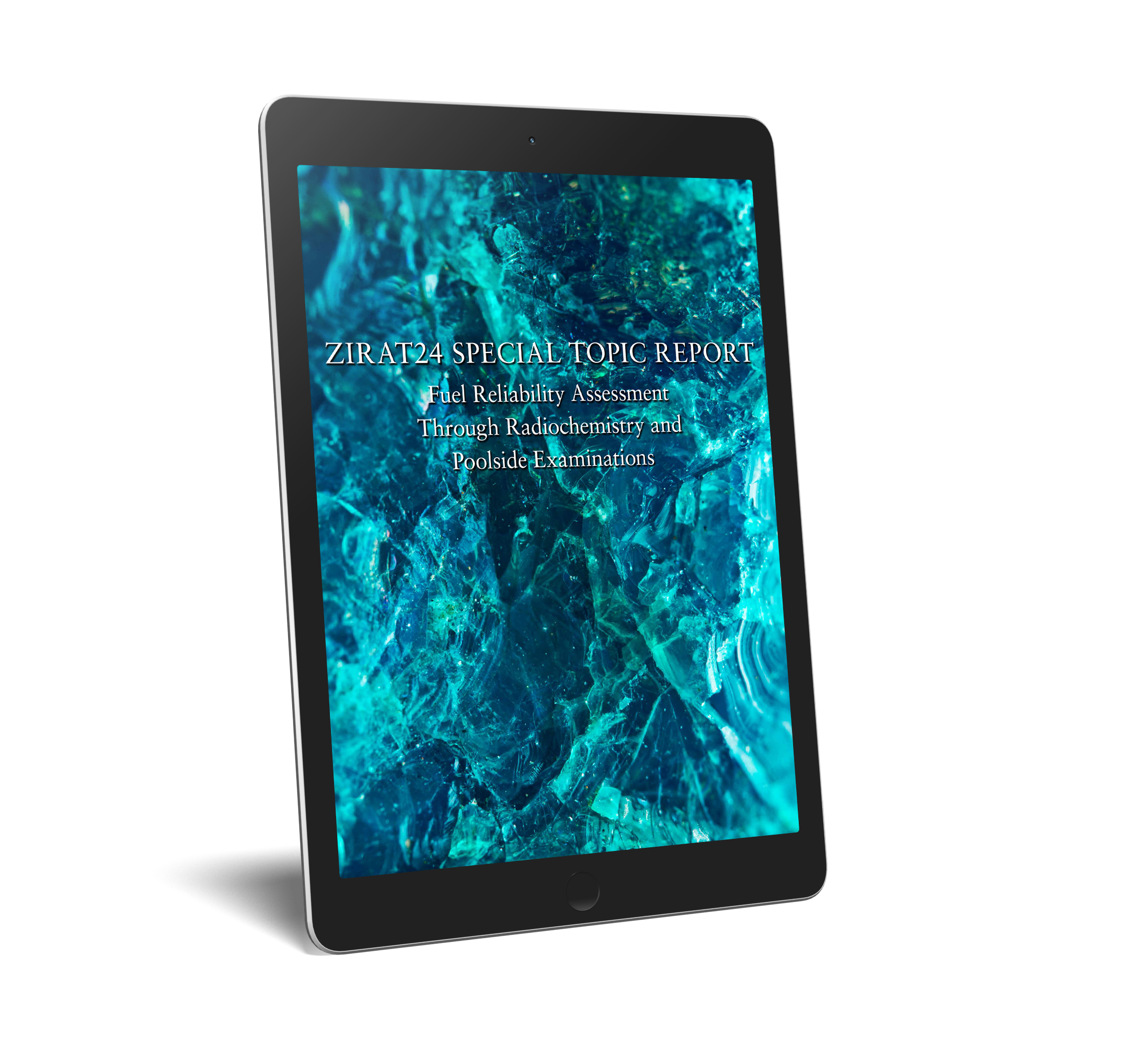
The primary objective of this report is to provide guidance in assessing fuel reliability for decisions regarding core operation, the cause of failure, returning fuel to the core for continued irradiation and of used nuclear fuel in dry storage containers. The first step is to determine during operation if the core is defect free or not through radiochemistry. If defected rods are detected or suspected, it is crucial that the failed rods be identified during poolside examination and the root cause be assessed in order to take actions to ensure that this failure mode does not occur again. To reach these objectives, various nondestructive poolside examinations techniques may be used to identify failed rod(s) and failure cause(s). In many cases root cause analysis also requires hot cell examinations.
If failed fuel is degrading during operation, fuel washout may contaminate the core with tramp uranium, which will increase the plant radiation levels for many years even after the failed and degraded rod(s) have been removed from the core. With good methodologies, whether fuel washout is occurring or not can be assessed during reactor operation. If significant fuel washout occurs during operation, plant management may decide to shut down the plant to remove the failed degraded rod(s) to stop fuel washout.
A secondary objective is to promote clear documentation of the state (intact or damaged) of all spent fuel assemblies or bundles for subsequent operations associated with the back-end of the fuel cycle. The latter includes wet storage at the power plant, interim wet or dry storage, transportation, and eventually disposal in a geologic formation. Primary fuel parameters of interest are fuel design, burnup, and leak tightness.
Content List
- Reactor and fuel designs
- Irradiation effects
- Fuel Reliability
3.1 Primary failure causes
3.2 Secondary Degradation - Fuel Reliability Assessments
4.1 Documentation specific to back end (storage and transportation) of fuel cycle
4.2 Radiochemistry
4.3 Poolside Fuel Examination
